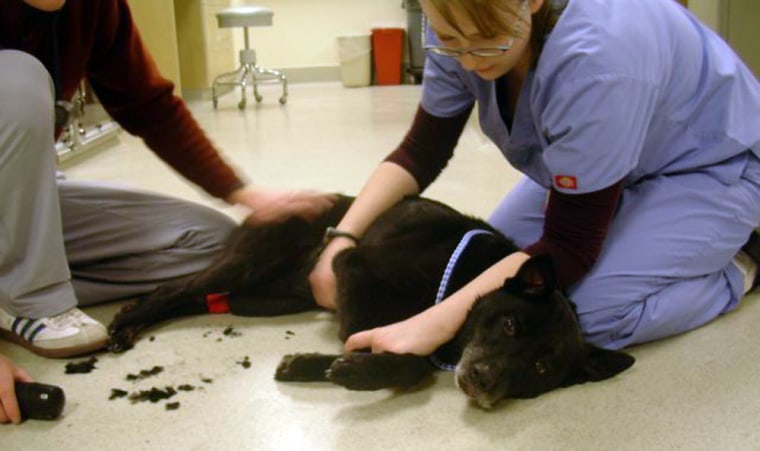Despite the feel-good story of Velvet, the black Labrador mix who helped keep three Mount Hood hikers warm and alive, some experts say taking dogs up the mountain for warmth and companionship is a foolhardy practice that could do more harm than good.
“Any sport that requires safety gear, like harnesses, crampons, ice axes and rope, is probably not an appropriate place for a pet dog to be” and could endanger both the dog and owner, said Julie Kittams, a Portland veterinarian for sled dogs in the Iditarod.
Taking a dog on a mountain-climbing expedition, she said, is “like caring for an injured team member. It just hinders your ability to get safely off the mountain.”
The dog kept the climbers warm as they were tucked into sleeping bags Sunday night in a whiteout snowstorm at 7,300 feet, about 4,000 feet shy of the summit.
A sheriff declared that the dog saved the hikers’ lives, but it was not clear whether they took the dog along for anything more than companionship.
Kittams said dogs, with body temperature between 99.8 and 101 degrees, can provide warmth in some situations, such as a sled race. But she cautioned against thinking of them as an emergency source of heat.
“If there’s a crisis, it’s not unheard of for a musher to snuggle up with the pack,” Kittams said. “I still wouldn’t advocate that as a reason to take a dog along on a mountain-climbing expedition.”
Knowing dogs’ limits
The rescue prompted climbers to chatter on mountaineering Web sites such as cascadeclimbers.com about the wisdom of bringing a dog on an expedition. Climbers noted that some dogs are bred for snowy environments, but other hikers wondered about potential risks for the animals.
“I’ve got a dog myself. I take her skiing, and I take her rock climbing,” said Steve Rollins, a veteran Hood climber and a leader of Portland Mountain Rescue, the outfit whose volunteers brought the three climbers out on Monday. “I think the south side of Mount Hood is pushing the envelope.”
But, Rollins said, every mountain situation and each dog are different. He said he’s taken his dog to the top of 12,276-foot Mount Adams, in Washington state, where the climb does not demand as much skill and equipment.
Velvet’s owner, Matty Bryant, did not respond to requests for an interview Tuesday.
David Lytle, spokesman for the Oregon Humane Society, said he doubted the publicity surrounding the rescue would lead more climbers to bring dogs. Given the injuries Velvet suffered, he said, “I would expect that it would be just the opposite.”
Velvet suffered cuts and scrapes on her feet from exposure to the snow and went home with bandages, antibiotics and pain medication. She was expected to make a full recovery.
